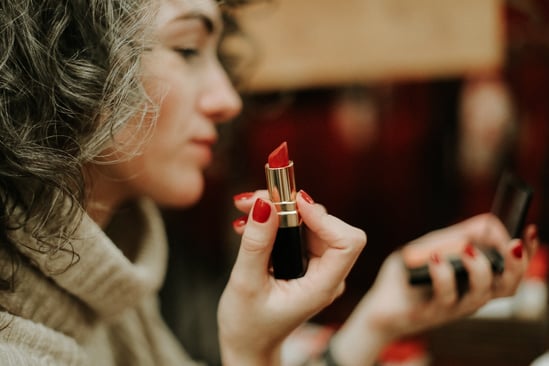Every decade welcomes changes to the personal care and beauty industry. The 1980s embraced neon clothing, voluminous hair, and bold makeup. The 1990s ushered in grunge clothing, crimped hairstyles, and dark lipsticks.
With every decade, the industry is rewritten — and these changes come at a much faster pace than in other sectors.
Keeping up with these market shifts requires personal care and beauty brands to continually innovate and equip themselves with the insights and tools needed to change with the times.
Oshiya Savur is the vice president of marketing and education, luxury division, at Revlon. She shared her experience with moving at this speed during a Salsify webinar, "Between Two Ferns Live Webinar: Salsify and Revlon."
Gain insights from one of the world's top personal care and beauty brands, and learn more about rising trends in the personal care and beauty market, as well as the barriers and secrets to success on the digital shelf.
TikTok and Other Rising Personal Care and Beauty Trends
The personal care and beauty industry's most notable driving change is the introduction of Gen Zers into the market. This generation has sparked significant change just by the way they discuss beauty. Brands have catered to this market by issuing new packaging, marketing their products differently, changing go-to-market (GTM) strategies, and offering new price points.
The social media network TikTok was one of the catalysts for Gen Zers to drive these changes. Creators can share beauty tips, tricks, and definitions with millions instantly. TikTok has completely reshaped what social media marketing can do to an industry at large.
On the commerce side of the equation, the past decade has experienced a change in consumers' buying channels. U.S. ecommerce revenue in the personal care and beauty industry has grown rapidly for years. According to Common Thread Collective, it's expected to grow to a $99 billion industry by 2023, an average growth of 16.5% annually through 2023.
As the ecommerce channels mature in the North American market, brands can look to China, where ecommerce has been a massive part of revenue for years. Chinese brands have mastered new technologies and trends like augmented reality (AR), virtual reality (VR), and live streaming as revenue drivers on the digital shelf.
As the ecommerce market matures, brands must start implementing these enriched shopping experiences to the digital shelf.
Offline and Online Strategies Must Work Together
Shoppers have embraced omnichannel commerce. Your offline and online channels can't be working towards different goals or in silos. Your goals and incentives must be well-woven between all channels.
Consumers today will flow between online and offline channels easily. They could meet with a virtual beauty consultant about their needs, go into a makeup retailer, try a narrowed-down list of products with the in-store expert, and then ultimately buy in-store (and replenish the item online).
There are so many available resources on all channels, and it's often the combination of experiences that leads consumers to their ultimate decision.
Offline channels are high-touch and high-maintenance. This structure is especially true in the luxury space. If shoppers walk into a luxury beauty store, they want to feel as though the brand knows them. They expect a white-glove experience. In-store can be a perfect channel for product discovery and the high-end brand experience.
Ecommerce channels can offer content that aids in product consideration. Virtual try-on features and skincare diagnostic apps can lead customers to their perfect product. "Gamified" content, such as quizzes, videos, and other interactive methods that personalize product recommendations, can lead to product discovery.
Additionally, ecommerce channels can offer promotions that attract new customers and power replenishment-driven purchases.
How Amazon Fits Into the Ecommerce Strategy for Luxury
The personal care and beauty industry has found that Amazon is a growth channel. But how brands maximize this growth differs based on their sub-category within the space.
Revlon’s GTM strategy on Amazon is different from their Elizabeth Arden skincare or Juicy Couture fragrance lines. These brands have different behaviors, different touchpoints, and different potentials for recurring revenue.
For mass cosmetics and drugstore products, Amazon shoppers are searching for unbranded products. However, on the premium side of Amazon, they’re coming in and searching for branded products specifically. Your ecommerce search engine optimization (SEO) strategy must be optimized for how your unique customer base is searching on Amazon.
Revlon focuses on building awareness among consumers who are looking to discover on Amazon. Mass cosmetics are about attracting more and more customers. Luxury personal care and beauty brands want more customers, of course, but their primary aim is to get these shoppers to spend more with each purchase.
Why? For luxury personal care and beauty brands, customers cost more to acquire, but the lifetime value of the customer is also higher.
Personal Care and Beauty Brands Look to the Future
When it comes to marketing the industry, Savur believes that community marketing will be what influencer marketing was in about two to three years. Community marketing, which connects your customers with each other to become their own brand promoters, will be the next big thing in beauty.
Brands will begin crowdsourcing content at a greater pace due to community marketing. The products they want will come directly from shoppers. Crowdsourced content, user-generated content, and influencer-generated content will make up most of a brand’s media in its marketing.
Although ecommerce has been booming for both mass and luxury personal care and beauty categories, it still only makes up about 30% of the industry’s revenue.
Even at its highest peak in 2020, ecommerce was still the minority channel for sales. As life resumes in the post-pandemic world, there will likely be a slight contraction of ecommerce growth. Shoppers will want to browse in stores again — but it won’t return to pre-pandemic levels.
Consumers have a taste for convenience and will likely continue buying online, especially for replenishment purchases. Online will be here to stay for affordable and luxury beauty alike, and brands will need to find strategies that pair the in-store and online experiences in the most streamlined, optimized way.



.svg)